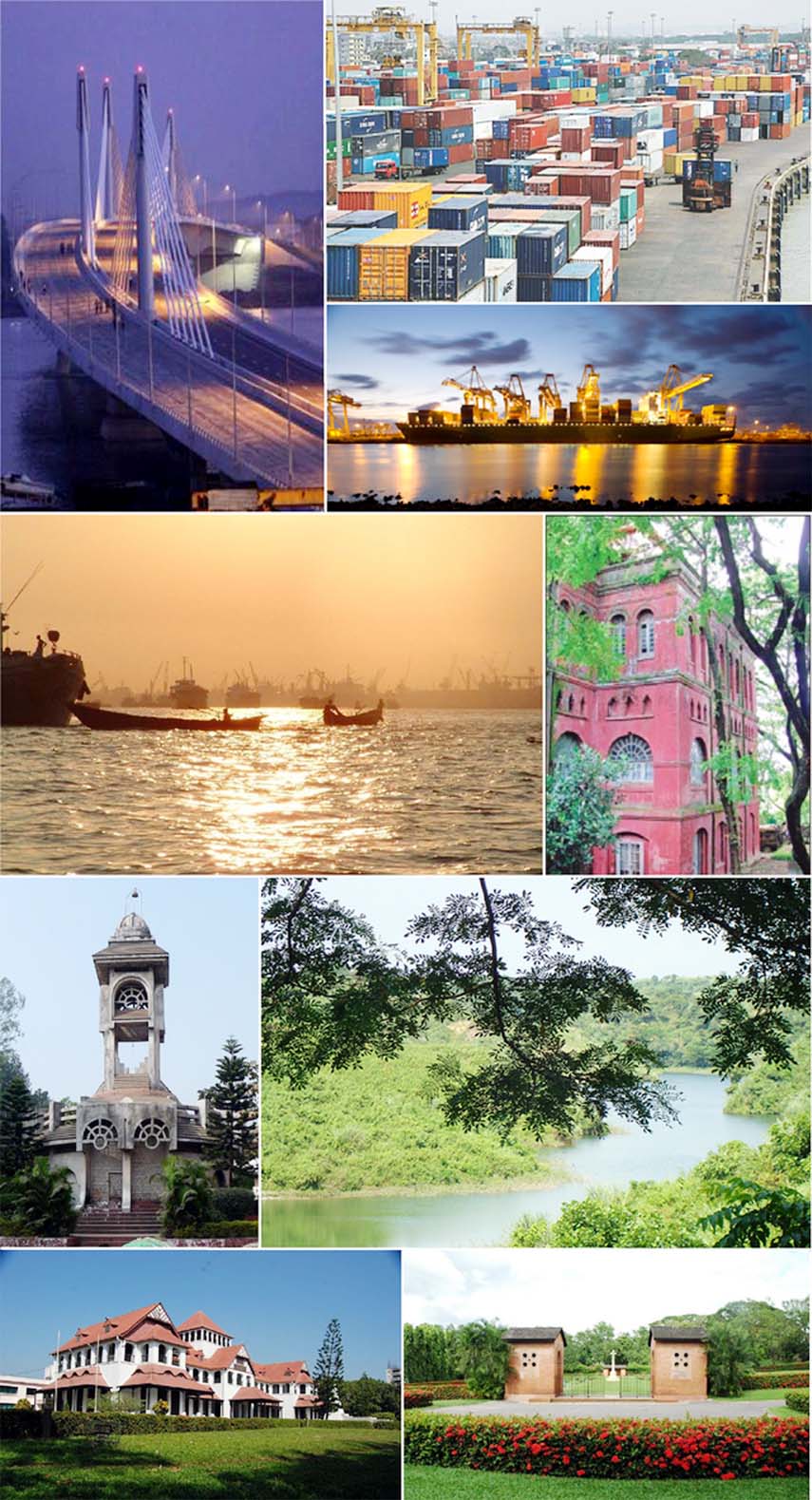
Chittagong is the second-largest city, busiest seaport and commercial capital of Bangladesh.
It is located on the banks of the Karnaphuli River. It is the administrative capital of Chittagong District and Chittagong Division. The Chittagong Metropolitan Area has a population of over 6.5 million.[5] It is administered by the Chittagong City Corporation and the Chittagong Development Authority.
Chittagong is an ancient and historic gateway of Bengal. It is the premier port and industrial centre of Bangladesh; hosting its most diversified industries; the Port of Chittagong; the headquarters of many of the oldest and largest Bangladeshi companies; the Chittagong Stock Exchange; and the venerable Chittagong Tea Auction. It is also one of the world’s fastest-growing cities.
Chittagong has major public educational and research institutions, including the University of Chittagong.
It is also home to the Asian University for Women. Prominent landmarks include the colonial Divisional Court, the Commonwealth War Cemetery, the Ethnological Museum of Chittagong, the Anderkilla Imperial Jame Mosque and the Zia Memorial Museum (formerly Circuit House). It also hosts several historic Sufi shrines, Hindu temples, Buddhist monasteries and Roman Catholic churches.
The port city is also known for controversial ship-breaking yards on its outskirts, which have been criticized for poor labour conditions.
The anglicised name Chittagong probably emerged from a mixture of the Bengali (Chattagram and Chatgaon) and Arakanese (Tsi-tsi-gong) names of the city. Medieval Arab traders referred to the port as Shetgang, which evolved from the term Shatt al-Ganga, meaning “Mouth of the Ganges”. Ma Huan, who accompanied Zheng He’s voyage to Bengal in the 14th century, transliterated it into Chinese as Cheh-ti-gan.
Jean Bernoulli, in his book Description Historique et Geographic de L’Inde (1786), explains that the anglicised name Chittagong came from the Arabic word “Shetgang”, which evolved from the term Shatt al-Ganga, meaning “Mouth of the Ganges”.
For centuries, Arab traders referred to the settlement as the main port of the Ganges delta and Bengal,[8] whence the medieval practice of calling the city itself Bengala.
The Bengali names of the city are Chatgaon and Chattagram. The origins of these words are unclear; however, several theories do exist.
More than six hundred years ago, an Islamic preacher Hazrat Badar Aawlia arrived in this city from the seas and chose Cheragi Pahar as his vantage point to spread the message of Islam among the locals. It was at the apex of this hill that he lit a chati (lamp) and called out (ajaan) for people to join him in saying prayer to God.
Chittagong’s etymology can then be traced unmistakably back to “chati”. And the hills are at the core of Chittagong’s mythology.[9] Another theory is that the first group of brahmins to have settled in this region were “chatt-upadhyays”.
Hence, this region came to be known as chatto-gan or Chattan Gaon (Chatto/Chattan=Rock or stone) (gan or gaon is the prakrit/Bengali term for village). A fact confirming this theory is that the majority of the kayastha of this region were of the kashyap gotra, which is also the gotra of the Chattopadhyays. The Arakanese name comes from the phrase tsi tsi gong, which means “the war that should never be fought”.
-Source: Wikipedia

